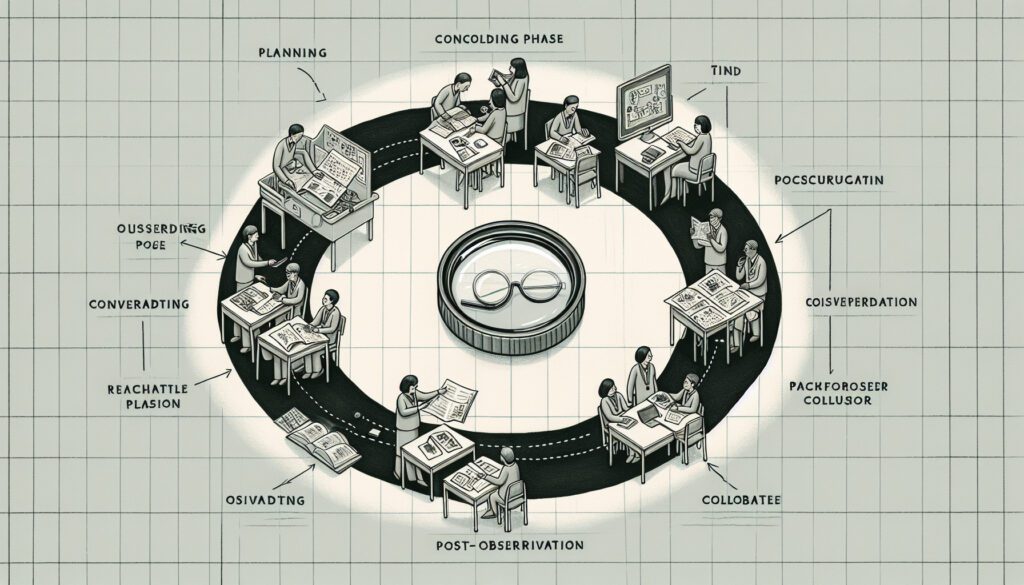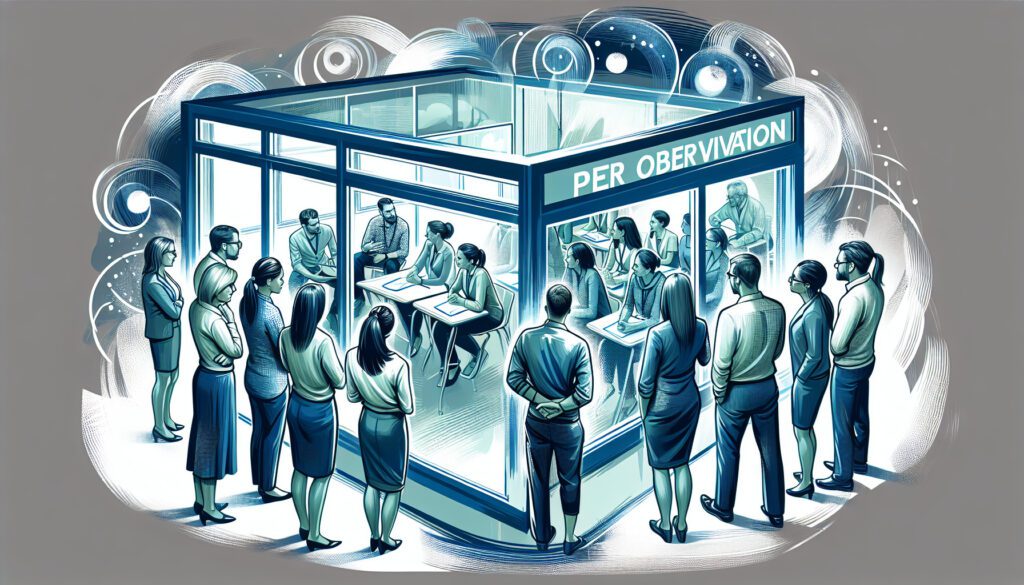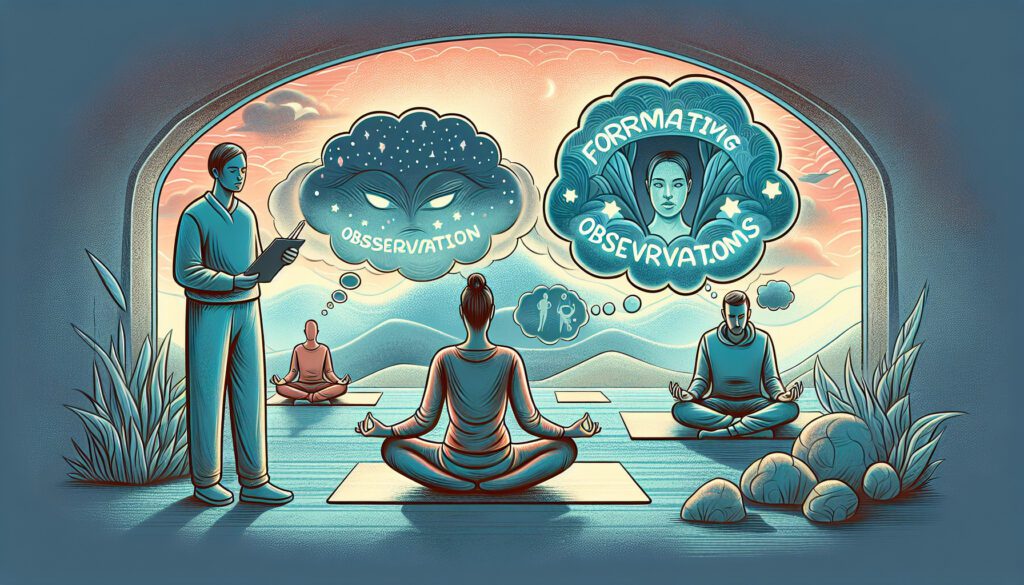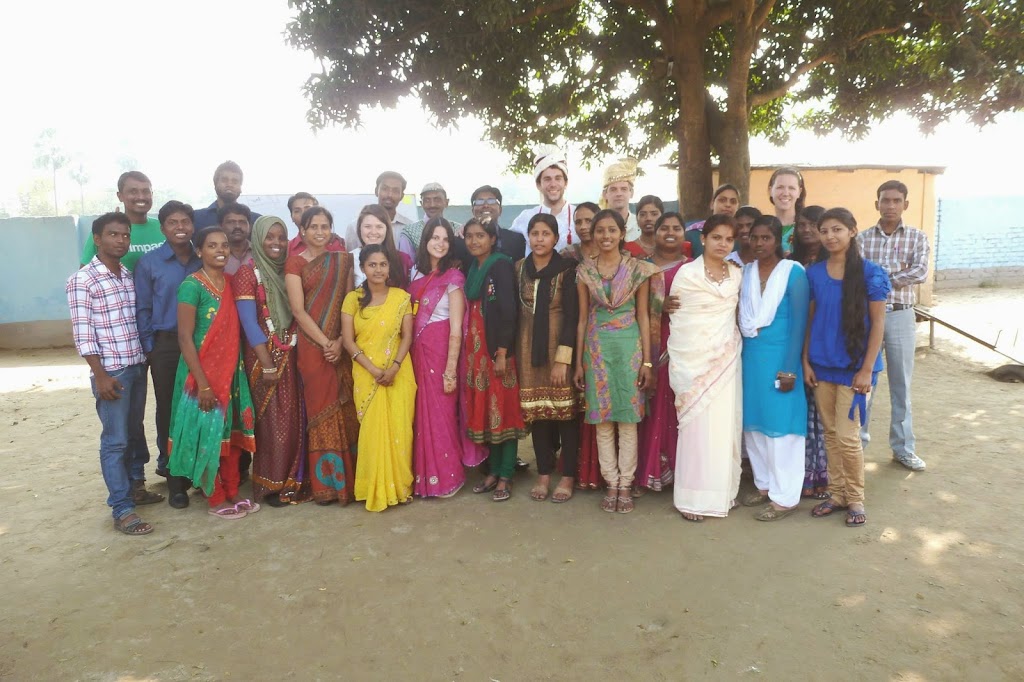Seeking to unlock the transformative power of observations in your teaching practice? Observations in teaching offer a pathway to elevate both teaching and learning. This article cuts through the noise to deliver targeted strategies for impactful observation practices and collaborative feedback mechanisms, all designed to boost your teaching methods and student success. Expect clear, succinct guidance on every stage of the observation process and insights into technologies that are reshaping the way we reflect and grow professionally.
Key Takeaways
- Classroom observations are critical for educational enhancement, focusing on professional growth through regular, actionable feedback and fostering a culture of continuous learning and professional camaraderie among educators.
- A productive observation process includes thorough preparation, focused observation of specific teaching strategiesor lesson components, and collaborative post-observation dialogue to provide relevant and actionable feedback for teacher improvement.
- The integration of peer and video observations within the teaching community supports the collaboration of educators in reflective practice, allowing them to share insights, refine teaching methods, and maximize student outcomes through formative observations and collective teacher efficacy.
The Essence of Classroom Observations in Modern Education

Classroom observations stand as the cornerstone of educational enhancement, wielding the power to elevate teacher effectiveness to new pinnacles—effectiveness that is, unarguably, the most influential school-based factor in student achievement. Through regular classroom observation and lesson observations, educators can identify areas for improvement and implement targeted strategies in their own teaching, making teacher observation a valuable tool for growth.
Yet, the journey doesn’t end at improvement alone; observations are the beacon guiding teachers to:
- Acquire new knowledge
- Invigorate
- Innovate
- Embed these advances into their daily teaching fabric to ultimately impact student achievement.
It’s a landscape that, despite its potential, is traversed by only a few; a mere fraction of teachers feel their professional growth is being nurtured through the observations they undergo, signaling a chasm in the provision of regular, actionable feedback that truly transforms instructional capabilities.
To bridge this divide, lesson observation and classroom observations must pivot towards a culture of continuous learning and professional camaraderie. This cultural metamorphosis beckons a shift from the traditional, evaluative gaze to one that is developmental, supportive, and enriching. By focusing on insightful teaching practices and fostering a spirit of self-reflection and mentorship, observations can become the crucible where teaching methods are refined and shared, and where teaching quality becomes synonymous with ongoing growth.
The Anatomy of a Productive Observation Process

Unlocking the full potential of classroom observations hinges on a triad of phases: meticulous planning, the act of observation itself, and a collaborative post-observation dialogue. This structural blueprint is designed not just to evaluate, but to inspire and catalyze a transformative impact on teaching strategies and lesson quality over time.
Planning for Success
The adage ‘success is where preparation and opportunity meet’ resonates profoundly with the observation process. Teachers priming for success meticulously organize lesson materials, create an orderly classroom aura, and prepare students for the presence of an observer. This groundwork is complemented by tailoring instruction to meet the kaleidoscopic needs of students and by ensuring lesson adaptations are ready at hand, easing the observation anxiety that so often shadows educators.
In instances where the observer’s focus remains an enigma, the proactive teacher seeks clarity, transforming the observation into a meaningful, targeted pursuit of excellence. And let’s not forget the cornerstone of planning—assessments must be aligned with key learning goals for feedback that is just, relevant, and ultimately conducive to growth.
Conducting the Observation
Once the stage is set, the act of observing takes center stage, with practices finely tuned to zero in on specific teaching strategies or lesson components. This laser focus ensures feedback is not only constructive but also a catalyst for refining one’s teaching practice.
The ‘walk through’ approach exemplifies this, immersing the observer in the lesson, fully engaged and ready to capture the essence of the teaching magic as it unfolds.
Post-Observation Collaboration
The final act in this triptych of observation is the post-observation collaboration, a phase where the seeds of feedback sown earlier are now nurtured into fruition. This feedback is the lifeblood for enhancing teacher effectiveness, a treasure trove that, when leveraged effectively, can lead to remarkable strides in student achievement.
Both administrators and teachers must dance to their own rhythm, finding a system that renders observations not just a formality but a meaningful exchange of insights during a formal job performance evaluation. The currency of this exchange is accuracy—essential for feedback that is not just relevant but actionable. And when teachers have a say in the kind of feedback they seek, when they are active participants rather than passive recipients, engagement in the evaluation process reaches its zenith, making observations a conduit for genuine improvement.
Peer Observation: A Collaborative Approach

Peer observation is the embodiment of collaborative learning, with teachers stepping into the shoes of their colleagues to glean insights, refine classroom skills, and collectively bolster their self-efficacy and student achievement. It’s a strategic alliance, one that involves careful selection of observation partners, clarity of focus, and an ongoing refinement of the process for sustained developmental impact.
Mutual Benefits for Teachers and Observers
The dance of peer observation yields a symphony of mutual benefits.
- The observed teacher gains fresh perspectives
- The observer harvests new strategies
- Witnessing firsthand the myriad student settings and interactions that form the tapestry of the learning environment
- Both parties engage in the reflective practice, a mirror that allows for self-analysis and sparks professional conversations about the art of teaching.
And in this dance, the ‘critical friend’ emerges, providing transparent and constructive feedback that is the cornerstone of the peer observation process, facilitating growth and improvement for both the teacher and their peer.
Strengthening Professional Learning Communities
Peer observation is the glue that binds a professional learning community, fostering a shared commitment to uplift teaching practices and elevate student outcomes. This community becomes a think tank where teachers collaborate, dissecting their teaching methods to build robust improvement plans that resonate across classrooms.
In the age of technology, video observations become a key tool in these communities, offering a medium to analyze teaching in depth and strategize for instructional enhancements with precision and clarity.
Video Observation: Enhancing Reflection and Growth

The advent of video observation marks a paradigm shift in the realm of reflective teaching. This technology opens the door to dissecting lessons beyond the constraints of real-time classroom dynamics, providing educators with the ultimate mirror to scrutinize their teaching practices and cultivate self-awareness.
Advantages Over Traditional Methods
Video observation transcends the limitations of traditional methods, offering a buffet of benefits that cater to the modern educator’s needs. It grants the flexibility to choose the ‘when’ and ‘where’ of observations, accommodating the ever-chaotic schedules of educators and evaluators alike. With the power to select specific lessons for observation, educators tailor the feedback process to their developmental needs, ensuring each piece of advice is a stepping stone to greater teaching prowess.
Integrating Technology in Observations
Technology has rooted itself firmly as an ally in the observation process. Tools like Codimg are revolutionizing the observation landscape, providing an unobtrusive, objective lens through which to view and improve pedagogical practices.
IRIS Connect further extends these capabilities, allowing teachers to reflect on and share their online lessons, thereby fostering a culture of open, collaborative learning.
Navigating the Challenges of Classroom Observations

While classroom observations are a beacon for educational refinement, they navigate a sea of challenges, from the trepidation of being observed to ensuring the feedback provided is as unbiased as it is beneficial. These waters, though sometimes rough, can be calmed with strategies that adapt to the diverse educational contexts we encounter today.
Minimizing Observation Anxiety
To still the waves of observation anxiety, subtle strategies can make a world of difference. Observers can adopt ninja-like discretion, minimizing their impact on the natural teaching environment.
Teachers, in turn, can embrace practices such as meditation or yoga to fend off anxiety’s grip, ensuring they approach observations with a tranquil mind and focused demeanor. Experienced teachers, in particular, can serve as role models for their peers in managing stress during evaluations.
Ensuring Fair and Objective Feedback
The compass guiding observations to the shores of fairness and objectivity lies in the clear demarcation between evaluations for accountability and those for professional growth. Video tools serve as the lighthouse in this endeavor, providing concrete evidence of teaching methods, which aids in delivering feedback rooted in the realities of the classroom.
Tailoring Observations for Diverse Educational Settings
The tapestry of educational settings is as varied as it is vibrant, necessitating a tailor-made approach to observations that honors the unique nuances of each environment.
From the personalized drama of special education classrooms to the grand orchestration of large-scale lectures, observation protocols must be adapted to ensure they are relevant and effective.
Special Considerations for Special Education Teachers
Special education demands observation protocols as unique as the students within its realm. These customized protocols must be sensitive to the diverse learning styles and disabilities, ensuring that instructional approaches are accurately measured and celebrated.
Training observers to navigate these specialized environments is crucial, adding layers of reliability and depth to the feedback provided.
Observing Large-Scale Lectures
In the grand amphitheaters of large-scale lectures, the observer and lecturer must orchestrate their communication pre-observation to set expectations and focus the lens of evaluation. Protocols and inventories are then brought to bear, meticulously crafted to capture the essence of teaching effectiveness in these vast learning spaces.
Instructional Coaching Through Observations
Instructional coaching through observations is akin to sculpting excellence in teaching, with focused observation identifying sub-goals and providing actionable guidance. This process is a long-term commitment, a journey of incremental improvements supported by a coach whose knowledge and interpersonal skills foster an environment of trust and professional development.
Maximizing the Impact on Student Outcomes
At the heart of all educational endeavors lies the unwavering goal to maximize student outcomes. Formative observations are the soil from which the seeds of professional development grow, offering a supportive structure for both teacher and student growth.
Collective teacher efficacy, bolstered by peer observation, becomes the sun that nourishes these seeds, driving better student outcomes.
Reflections on Best Practices
As we reflect on the journey through the landscape of classroom observations, we recognize the profound impact of video observation technology. It streamlines the sharing of best practices and allows for a comprehensive evaluation of both teachers and students across various educational processes.
With tools like Codimg, teachers can self-evaluate spoken presentations or performances, enhancing their skills in real-time.
Summary
We have ventured through the kaleidoscope of classroom observations, uncovering the multitude of facets that contribute to elevating the educational experience. From the initial stirrings of planning to the crescendo of post-observation collaboration, each step in the observation process is a note in the symphony of effective teaching. Peer observations and video technology have emerged as powerful conductors in this orchestra, leading the way to reflective practice and professional growth.
In embracing the art of observation, educators unlock the potential for transformational change, honing their craft to the highest standards. Let this exploration be a catalyst for all who seek to enhance the quality of teaching and, by extension, forge a brighter future for our students.
Frequently Asked Questions
How do classroom observations directly impact student achievement?
Classroom observations directly impact student achievement by enhancing teacher effectiveness, which is the most significant school-based factor influencing students’ learning success. Therefore, regular observations can contribute to improved student outcomes.
What are the benefits of peer observation for teachers?
Peer observation benefits teachers by facilitating learning from colleagues, adapting new strategies, engaging in reflective practice, and receiving constructive feedback, which ultimately contributes to professional growth and improved student outcomes.
How does video observation differ from traditional observation methods?
Video observation differs from traditional methods by offering greater flexibility, objectivity, and convenience, providing a less intrusive and more reflective way for educators to review and analyze teaching practices in detail.
What strategies can be used to minimize anxiety during classroom observations?
To minimize anxiety during classroom observations, you can try discreet observer positioning, practice stress-relief techniques like meditation, and focus on formative observations that emphasize growth. These strategies can help create a more comfortable observation experience for you.
Can classroom observations be tailored for specific educational settings, such as special education or large lectures?
Yes, classroom observations can be tailored for specific settings by customizing protocols and training observers to account for diverse learning needs and teaching strategies. This allows for a more accurate and beneficial evaluation of those educational settings.


